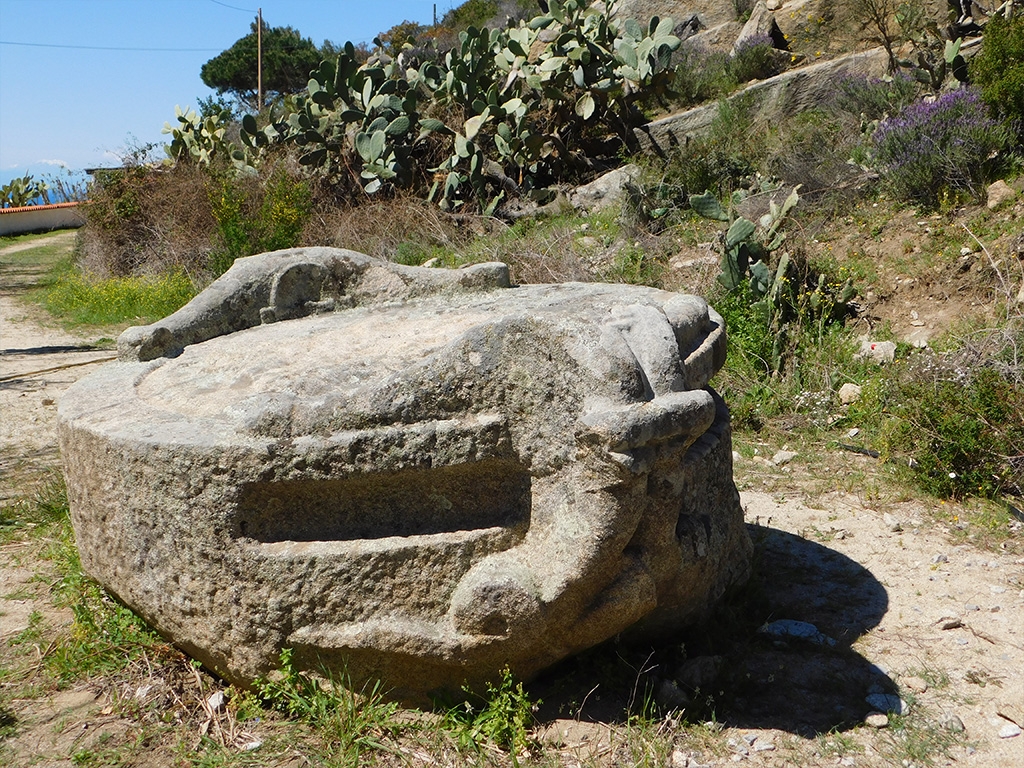
Historical granite quarrying
For millennia, the island's granodiorite was quarried as a building material, due to its structural and ornamental qualities, and traditionally known as granito dell'Elba ('Elba granite'). Classified as an ornamental stone, it features a mosaic of white and grey spots in shapes ranging from irregular to rectangular and sizes from millimetres to centimetres, together with some smaller black spots. On the southern slopes of Mount Capanne, above the Cavoli and Seccheto beaches, there is a scattering of old sites reaching down to the coast where, since Roman times, this pale, igneous rock was quarried to make columns and other artifacts. The maquis is dotted with structures, either finished or rough-hewn and then abandoned, sometimes inexplicably, on the granite slopes from which they were quarried.
The very name of Cavoli derives from the Latin, Cavulae, a reference to the small quarries found in the area in ancient times. Along the coast, there are other signs of mining activities, such as the maritime quarries near Seccheto bay and in the area between Fetovaia and Seccheto featuring the Piscine ('swimming pools') where the cliff was altered through quarrying of this stone, creating cavities which the sea then entered, forming seemingly natural pools.
The Romans used 'Elba granite' to build the Pantheon and other famous monuments in ancient Rome, while the 18 Roman columns in Aachen Cathedral were repurposed in medieval times. In the Middle Ages, 'Elba granite' was used in construction of Pisa Cathedral and Baptistery and other religious buildings in this Tuscan city, once a maritime republic.
The Medici family also used 'Elba granite' in Florence, in the ponds and other constructions of the Boboli Gardens and in various city monuments. Granite quarrying has continued to the present day; indeed, in recent centuries, this pale Elba stone was used to make harbour docks, city paving and kerbs while, today, the activity has declined in quantity of stone quarried, specialising in product types such as decorative elements for homes and villas as well as fine urban furnishings.
(Antonello Marchese, translation from Italian)

